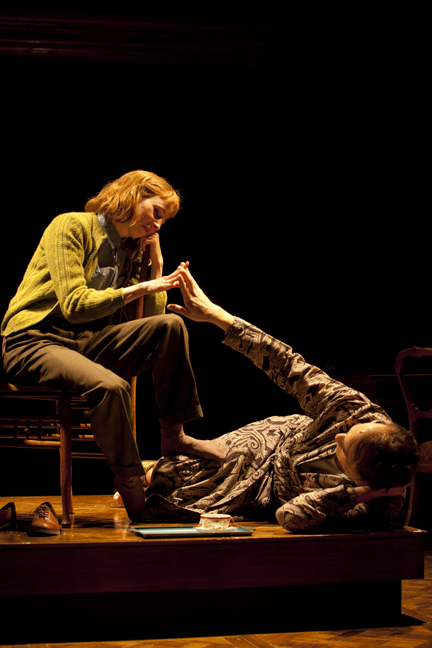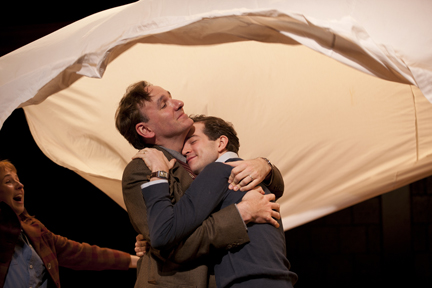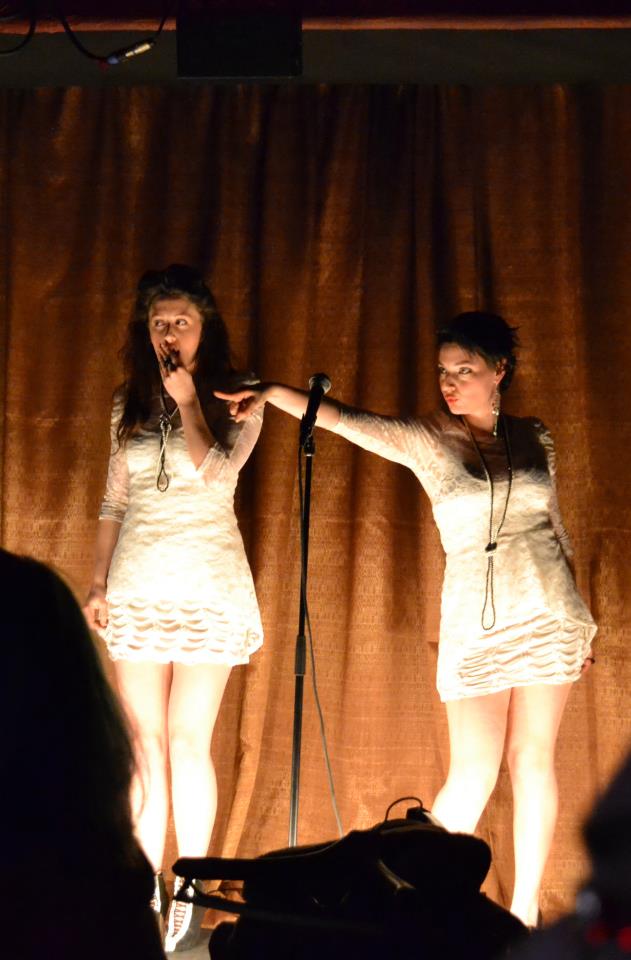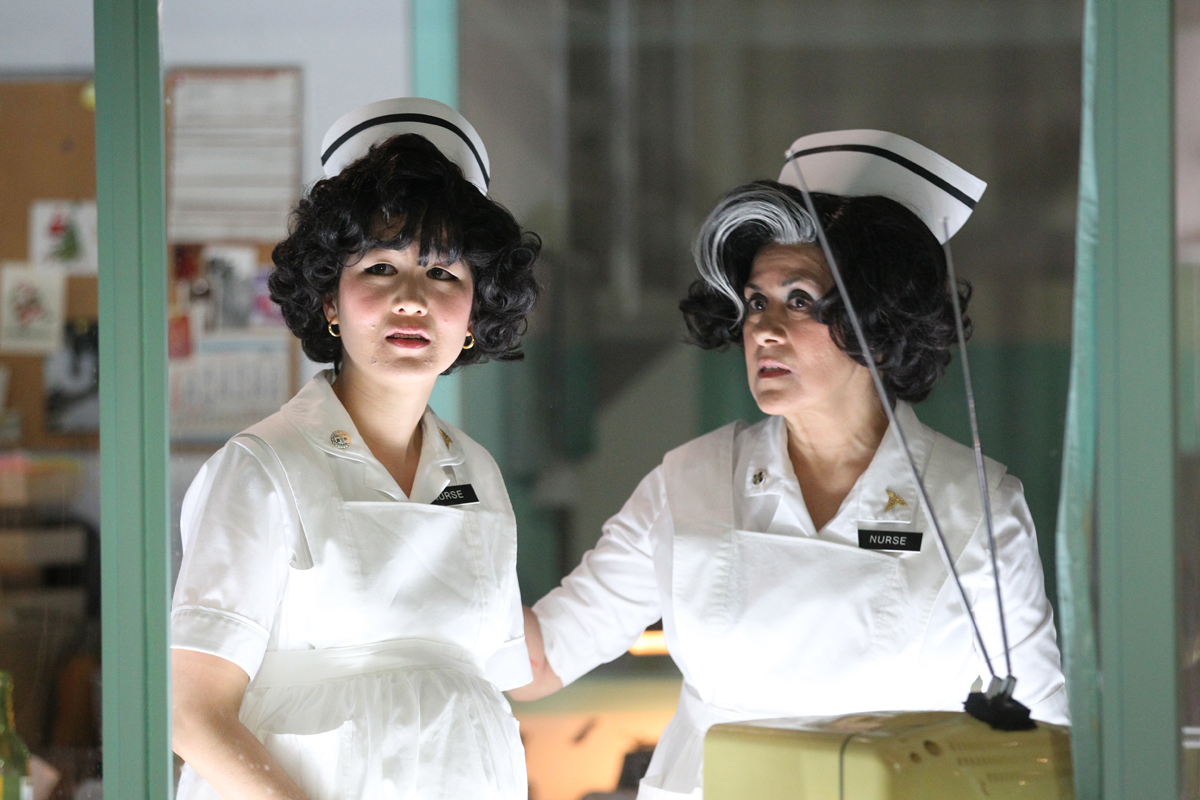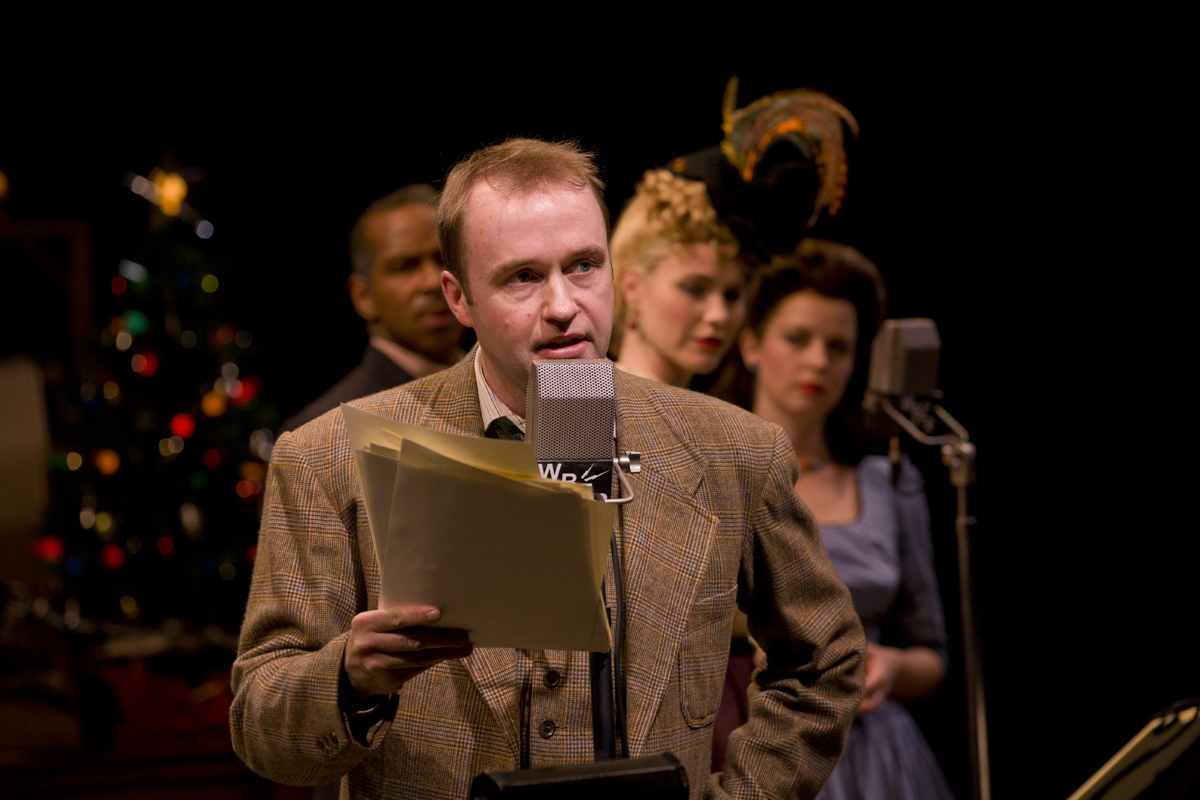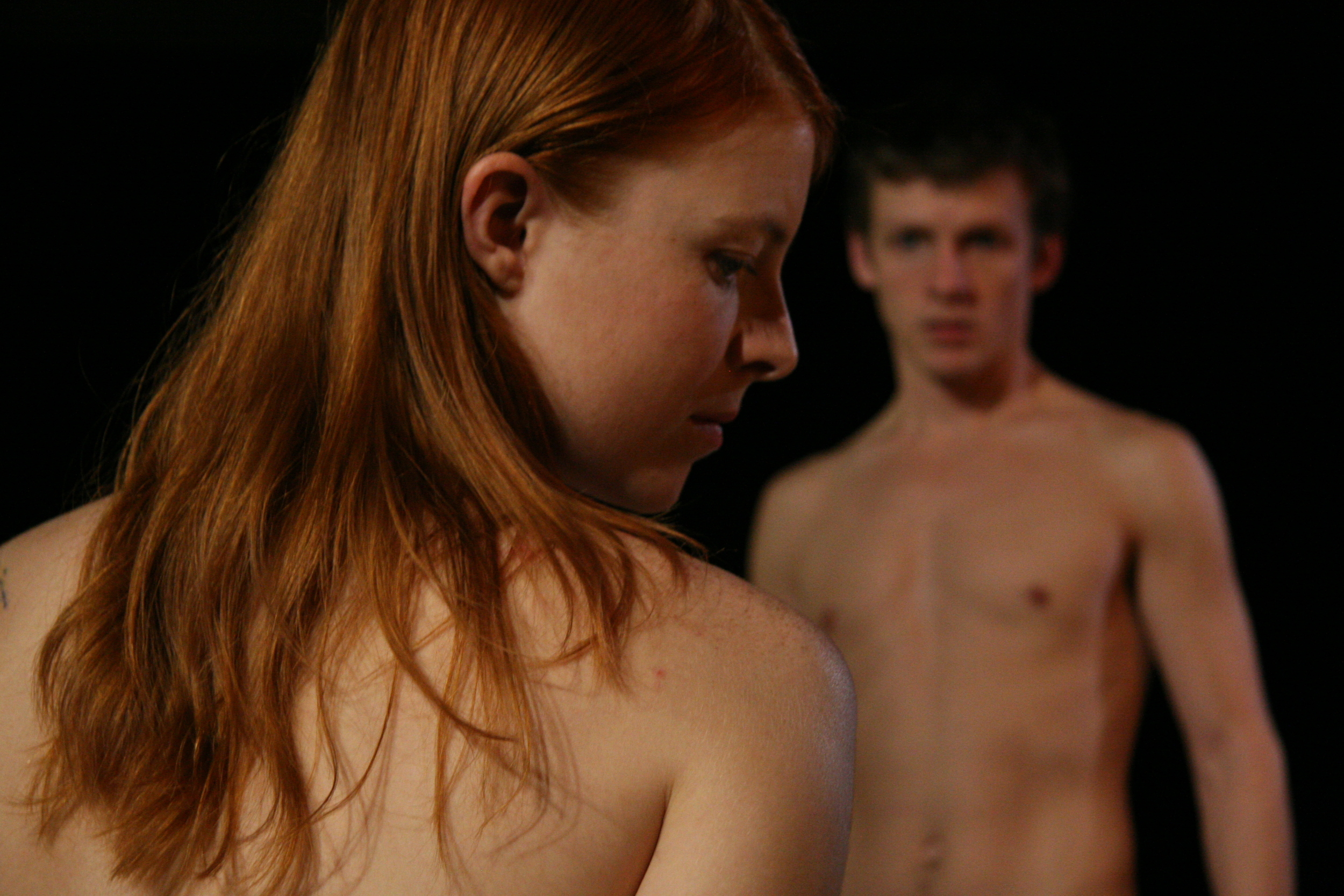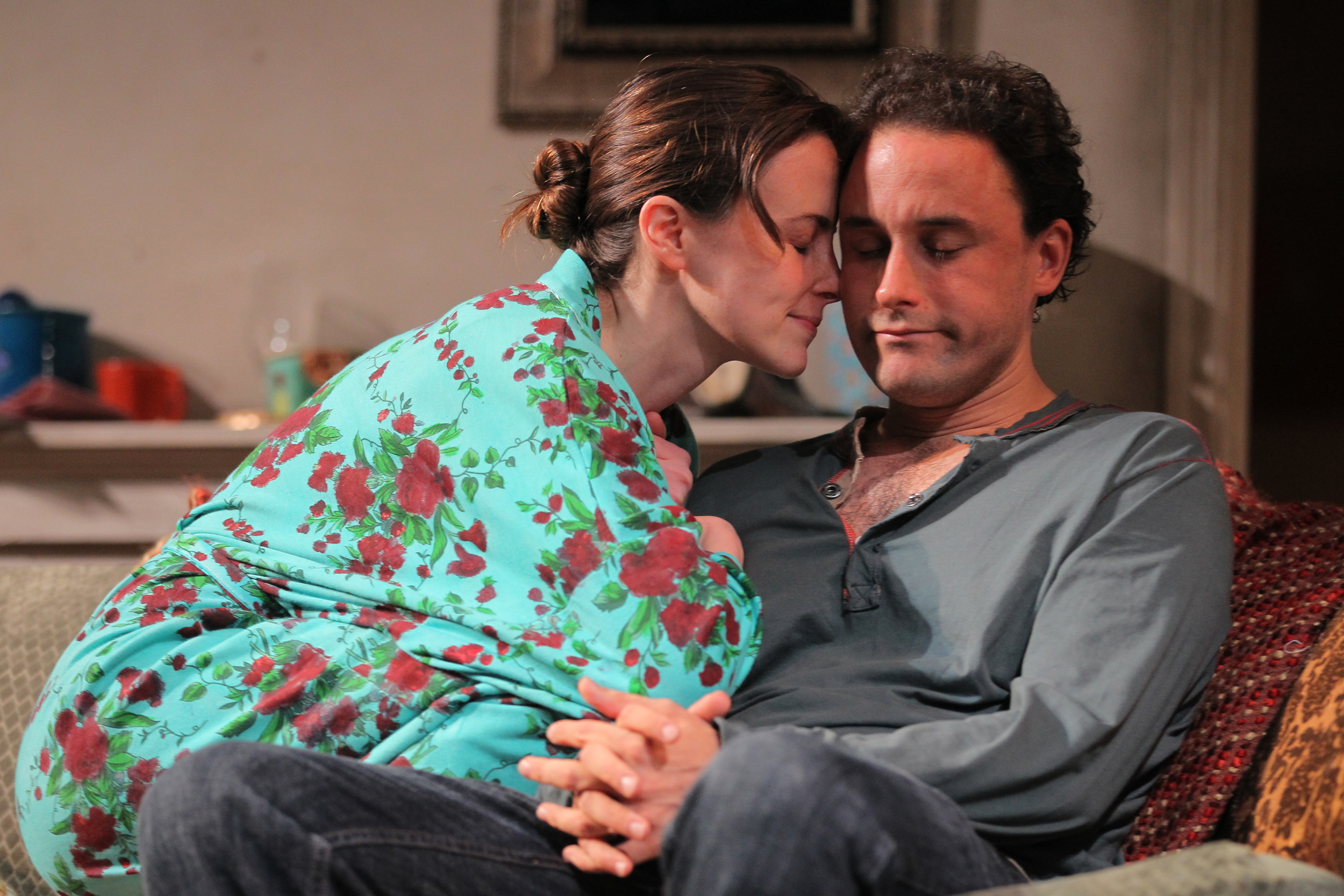Arthur Kopit’s Chamber Music, the most recent show at The Yale Cabaret, dates from the Sixties and could be called a carnivalization of the women’s movement. The ‘carnival’ aspects are familiar enough from other counter-cultural works of the time: the characters are inmates in an asylum for the insane, the asylum itself is a cultural microcosm, and the insane are, in some allegorical sense, representative of certain trends that might liberate us all from the asylums to which we, in our insanity, have relegated ourselves. Kopit’s play takes this a step further: the allegorical meaning of the inmates are worn on their sleeves, like Halloween costumes or superhero alter egos: each member of the cast is a woman with an attribute: Woman with a Notebook (Michelle McGregor), Woman in Armor (Marissa Neitling), Woman with a Gavel (Ashton Heyl), Woman in Aviatrix’s Outfit (Monique Barbee), and so on. We see emblems, but also, because the women address each other by the names they have assumed, we see alter-egos: Gertrude Stein, Joan of Arc, Susan B. Anthony, Amelia Earhart, respectively. The easy interpretation would be that, though crazy, these women, in identifying with such successful and significant women, are trying to assert possibilities beyond the drab realities to which women generally succumb, and the only way male society—represented by Man in White (Fisher Neal) and his Assistant (Mitchell Winter)—can cope is to lock them up and let them have their carping, chaotic meetings that go nowhere. That interpretation is certainly present—especially when the men come in to caution the ladies on not getting out of hand, and on keeping the window closed, threatening them with the disbanding of their little sorority if they don’t maintain—and the term is stressed—“decorum.”
Of course, when no policing male gaze is present, the ladies are free to be themselves, though the selves they manifest are silly and childish versions of what they deem the characteristics of the women they mimic: Stein, a writer making notes; Joan a warrior with a large, cumbersome wooden cross, Constanze Mozart (Sophie von Haselberg), a musical appreciator clutching a recording of one of her husband’s treasured works; Susan B. Anthony, a presider and leader; Woman in Gossamer Dress, aka silent film actress Pearl White (Mariko Nakasone), ingratiating and easily upset; Queen Isabella of Spain (Ceci Fernandez), regal and imperious; Amelia Earhart, aggressive in her demeanor and sarcastic toward the idées fixes of her colleagues. As tensions amongst them mount, and as the Woman in Safari Outfit/Osa Johnson tries to advance a cannibalistic plan on how to defeat the men’s ward that, they are certain, will attack them shortly, the situation requires a sacrifice. Any guesses who it will be? No, not Joan.
The play mostly takes place at a table (with placards reminiscent of Judy Chicago’s The Dinner Party) surrounded by the audience, who may feel somewhat like eavesdroppers on a meeting, with minutes and motions, that is best understood by those participating. Where our participation is required is in the role of those who—ostensibly sane—can see what these women can’t see: the comic and grotesque aspects of their delusions. On that score, the cast was mostly equal to the iconic nature of the characters (though Kopit’s version of Stein seemed considerably at odds with my impression of that author, preferring to make her a nitpicking oddity of idiolalia) with special mention going to Barbee, Neitling, Heyl, von Haselberg, and the one in the pith helmet (kudos to Carmen Martinez’s simple but effective costumes).
The comedy—Joan and her cross, Pearl and her insecurities—shifted toward violence and menace inevitably and effectively (the delusions of the mad can be both amusing and chilling), and the “twist” at the end arrived with just enough absurdist malevolence (accent on “male”) to cause the allegory to deepen ever so slightly. Chamber Music might be considered as a score for ten voices, and Katie McGerr’s direction kept the voices in frantic and revealing cross-purposes that felt natural but pointed.
Up next at the Cab—madness in great ones: Yiddish King Lear, based on Jacob Gordin’s 1903 attempt to retell the Shakespeare tale in a Jewish immigrant context. The play, which hasn’t been performed since 1934, has been adapted for the Cab by Whitney Dibo and Martha Kaufman. Museum relic or revitalized Americana? See for yourself, March 8-10.
Chamber Music By Arthur Kopit Directed by Katie McGerr
The Yale Cabaret March 1-3, 2012


